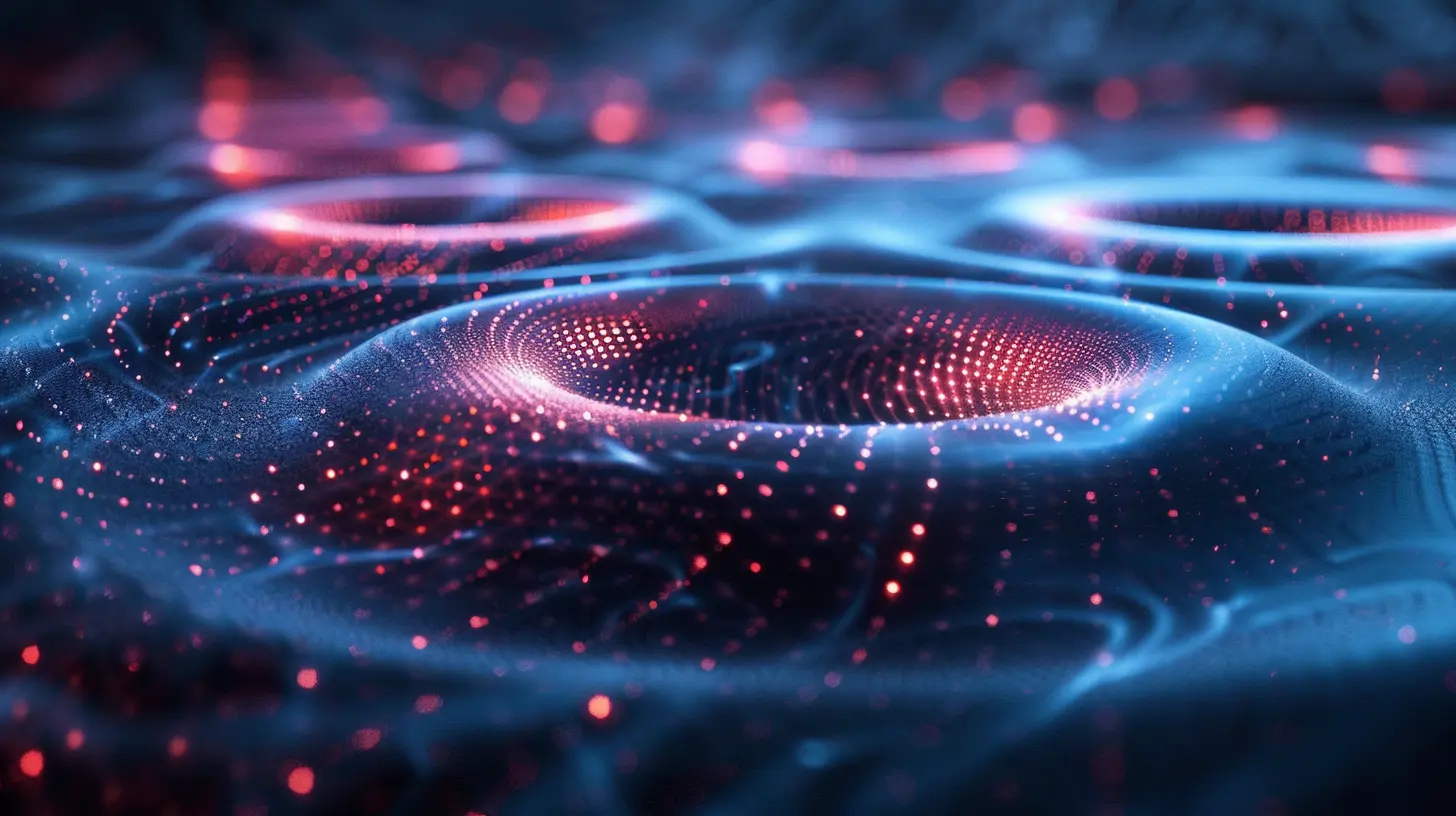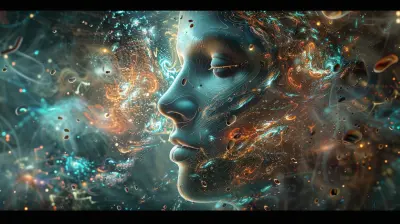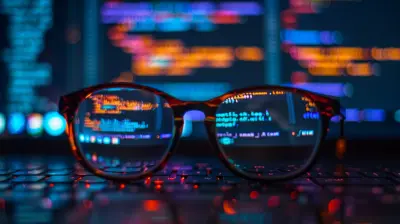Breaking Down the Basics of Quantum Entanglement
15 July 2025
Quantum entanglement sounds like something straight out of a sci-fi movie, right? Like two particles whispering secrets across the universe. But here’s the thing—it’s real. It’s weird. And it’s one of the wildest, most mind-bending phenomena in the quantum world. If you've ever wondered what quantum entanglement is and why the heck physicists get so hyped about it, buckle up. We're about to shatter some classical thinking and dive deep into the rabbit hole.

What the Heck Is Quantum Entanglement, Anyway?
Alright, let’s break this down without boring you to tears.Quantum entanglement happens when two (or more) particles become connected in such a way that their states are interdependent—no matter how far apart they are. You tweak one? Bam! The other reacts instantly. We're talking about changes happening faster than the speed of light. Spooky? Einstein thought so.
He even nicknamed it “spooky action at a distance.” Spoiler alert: turns out spooky might also mean accurate.

Let’s Get a Little Nerdy: The Quantum State
Imagine you're flipping a coin. In the real, everyday world—also called the classical world—the coin is either heads or tails. You just don’t know until it lands.But in the quantum world? That coin exists in a superposition. It's both heads AND tails until you observe it.
Now, take two coins. Quantum entanglement means that flipping one instantly determines the outcome of the other, regardless if the coins are a room apart or one’s chilling on the moon while the other's in your kitchen drawer.
Magic? Not quite. Science? Absolutely.
The Birth of Entanglement: Where It All Started
Let’s roll back to the 1930s. A trio of brilliant minds—Albert Einstein, Boris Podolsky, and Nathan Rosen—came up with a thought experiment now famously called the EPR Paradox. They basically said, “Hey, quantum mechanics seems kinda incomplete.”Their big issue? Entanglement. They couldn't wrap their heads around the idea that particles could influence each other instantly across huge distances. It made no sense with what they knew about physics.
But then came the quantum mechanics community, which said, “Nah, this is how the universe rolls. Weird, but true.”
In the 1960s, physicist John Bell proposed a mathematical way to test entanglement—known as Bell’s Theorem—and experiments since then have overwhelmingly supported the spooky side.
Let’s Talk About the Quantum Bond
So, how do two particles become entangled?It usually happens when two particles are generated from a single process—like splitting a photon. Because they originated from the same source, they share a wave function, kind of like being twins born on the same wavelength.
Here’s the kick: once they interact and get entangled, any measurement of one instantly affects the state of the other. And yes, this applies even if they’re miles—or even light-years—apart.
Now, don’t confuse this with communication. You can’t use entanglement to send messages faster than light (sorry, future space WhatsApp). It’s more like the universe saying, “These two? They're linked forever. What happens to one, happens to the other.”
Real-World Analogy: The Weirdest Remote Control Ever
Imagine you’ve got a pair of gloves. You put one glove in a box and mail it to your friend living across the planet. You keep the other one. You don’t know which box has the right-hand glove and which has the left.But the moment you open your box and see it’s the right-handed glove, voila! You instantly know your friend has the left. That’s the principle behind entanglement.
But here’s the twist: in quantum mechanics, it’s not that the gloves were determined before being opened. Until one is measured, they’re somehow in a state of BOTH being right and left. It's only when you peek inside that the universe collapses into one outcome—and affects the other box across the globe.
Yeah. Mind blown.
Bell’s Theorem: The Entanglement Sheriff in Town
Alright, time to nerd-out just a little.John Bell developed a way to test whether particles truly have interconnected states or if hidden variables (a sneaky invisible code behind the scenes) were pulling the strings. His inequality (appropriately titled “Bell’s Inequality”) was a statistical test.
If particles obey local realism (i.e., they don't transmit faster-than-light info), then they should stick to Bell’s inequality. But if they’re truly entangled—they’ll break the rules.
Guess what? Experiments over and over again have shown violations of Bell’s inequality.
The verdict? Quantum entanglement is real, baby.
Why Should You Care? (A.K.A Why Entanglement Isn't Just Geek Candy)
You might be thinking, “Cool story, bro, but what does this have to do with me?”Fair question. And here's the deal—quantum entanglement isn’t just theoretical fluff. It’s powering some crazy advances in technology.
1. Quantum Computing
Forget about your MacBook or the fastest gaming rig out there. Quantum computers use qubits (quantum bits), which can exist in multiple states at once and be entangled with each other. This means solving problems that would take classical computers billions of years... in seconds.Entanglement is a fundamental part of how these quantum beasts crunch data.
2. Quantum Cryptography
Tired of data breaches and privacy scandals? With quantum entanglement, you can create unhackable communication channels. If someone tries to snoop on your quantum-encoded message, it breaks the entanglement—and instantly reveals the intrusion. That’s next-level cybersecurity.3. Quantum Teleportation
No, not like Star Trek. Sadly, we’re not teleporting people yet. But with entanglement, we can transfer quantum states from one particle to another over a distance. It’s mind-bending stuff and lays the groundwork for teleporting information across a quantum network.Common Misconceptions About Quantum Entanglement
Let’s clear the air on a few things:- It doesn’t mean faster-than-light communication. Sorry, no wormhole texting just yet.
- It’s not magic. It feels magical, sure, but it’s just how the universe works on the smallest scale.
- Entanglement doesn’t violate causality. Effects don’t happen before causes. The timing still makes sense—even if it’s super weird.
Quantum Entanglement in Pop Culture
Quantum entanglement has wormed its way into all sorts of media. Ever seen Interstellar? While it didn’t directly mention entanglement, it leaned heavily on quantum concepts to mess with time and space.Marvel’s Ant-Man and the whole Quantum Realm plotline? Total sci-fi interpretation of real quantum phenomena.
Even the famous “Stranger Things” Upside Down has eerie echoes of quantum dual realities.
So yeah, science fiction borrows heavily from science fact… with a lot of creative liberty.
The Philosophical Mind-Bender
Entanglement doesn’t just mess with physics. It messes with our understanding of reality itself.If measuring one particle changes the state of another instantly, what does that say about the nature of space, time, and reality? Are distances even real, or is everything somehow stitched together more tightly than we can perceive?
Some physicists argue we need to rethink what “separate” means in the quantum world. Maybe nothing is ever really independent. Maybe everything is just… connected.
The Future of Entanglement: Where Do We Go From Here?
We're still scratching the surface when it comes to entanglement. But the roadmap ahead is thrilling:- Quantum Networks: Scientists are laying the groundwork for the quantum internet—connecting quantum computers through entangled particles.
- Deep Space Communication: Entanglement could revolutionize how we send and receive signals across galaxies. Think of controlling rovers on Mars or Jupiter in real-time.
- Better Simulations: Modeling complex molecules or reactions (like how proteins fold) is a nightmare even for supercomputers. Quantum entanglement can fast-track this and revolutionize medicine and materials science.
TL;DR – Quantum Entanglement Is Freaking Awesome
Let’s recap what we’ve learned:- Quantum entanglement happens when two particles are so closely linked that the state of one instantly affects the other, no matter the distance.
- It defies classical physics, supports quantum mechanics, and seriously annoyed Einstein.
- It’s more than just theoretical—it’s fueling innovations in computing, cryptography, and space communication.
- And yeah, it makes your brain hurt in the best possible way.
So next time someone brings up quantum entanglement, don’t just nod like you know what they’re talking about. Drop some knowledge. Blow some minds. Maybe even reference spooky action at a distance and throw in a glove analogy.
Quantum physics might be weird, but once you get the hang of it, it’s weird in a totally awesome way.
all images in this post were generated using AI tools
Category:
Quantum ComputingAuthor:

Adeline Taylor
Discussion
rate this article
2 comments
Zeno O'Brien
Great article! Your explanation of quantum entanglement is clear and accessible, making complex concepts easier to understand. I appreciate the use of relatable analogies that help demystify this fascinating topic. Looking forward to more insightful posts on cutting-edge technologies like this!
December 17, 2025 at 1:58 PM
Zanthe McAdams
Quantum entanglement is a thrilling glimpse into the mysteries of our universe! Embrace the complexity and let your curiosity guide you—every step forward in understanding brings us closer to innovation!
July 31, 2025 at 4:34 AM

Adeline Taylor
Thank you for your enthusiasm! Quantum entanglement indeed opens fascinating doors to understanding and innovation. Embracing the complexity is key to unlocking its potential!


